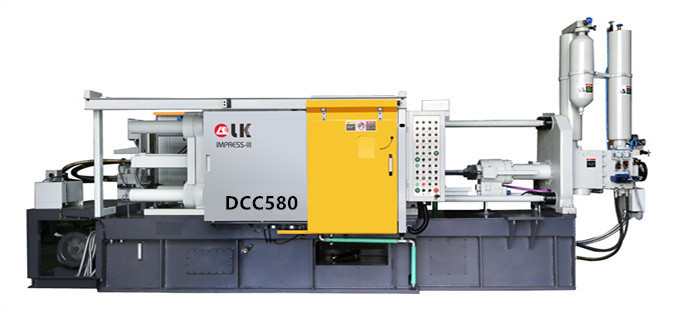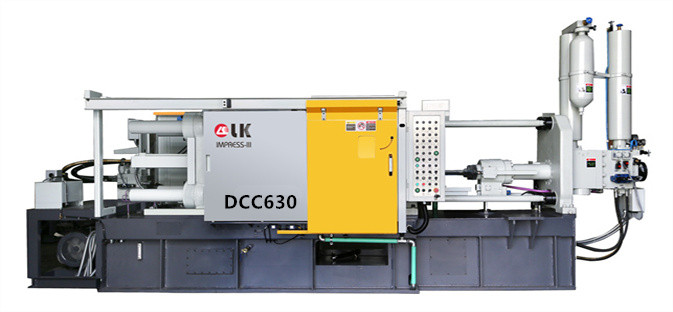How Metal, Plastic and Machine Selection Affect the Die Casting Process
LK Die Casting Machine / 2024-07-05 09:11:14
Introduction
The die-casting process occupies an important position in modern manufacturing.
Its high efficiency and high precision make it widely used in automobiles, aviation, electronics, and other fields. However, the successful implementation of the die-casting process depends not only on the technology itself but also on the metals, plastics, and machines selected.
This article will explore in depth how the selection of these materials and equipment affects the die-casting process, so as to help enterprises make wise decisions in actual production.
1. The influence of metal selection on the die-casting process
Metal types
Aluminum alloy: Aluminum alloy is one of the most commonly used materials in die casting, with good fluidity, low melting point, and good mechanical properties.

Its advantages are lightweight and corrosion resistance, but its hardness and wear resistance is poor, and it is suitable for the manufacture of automotive parts,
electronic equipment housings, etc.
Zinc alloy: Zinc alloy has a low melting point and good fluidity, which is suitable for precision casting. Its main disadvantage is that it is heavy and is often
used to manufacture small parts such as gears, door locks, etc.
Magnesium alloy: Magnesium alloy is extremely lightweight and has good mechanical properties, but it has a high melting point and is difficult to cast. It is
suitable for the manufacture of lightweight parts in aerospace and automobiles.
Copper alloy: Copper alloy has good wear resistance and excellent thermal and electrical conductivity, but a high melting point and high cost, suitable for high-
end electrical equipment and high-temperature environment parts.
Metal properties
Melting point: Metals with low melting points are easier to cast, but require stricter temperature control. High melting point metals require molds and equipment
that are more resistant to high temperatures.
Flowability: Metals with good fluidity can more easily fill complex details of molds and improve product quality.
Shrinkage: High shrinkage of metal cooling will cause changes in product size, which needs to be compensated during design and casting.
Mechanical properties: The mechanical properties of different metals such as strength, hardness, and toughness directly affect the service life and scope of
application of the final product.
2. The impact of plastic selection on die casting process
Plastic types
Thermoplastic plastics: such as polyethylene (PE), polypropylene (PP), polyvinyl chloride (PVC), etc., have the characteristics of repeated heating and molding,
suitable for mass production, and are widely used in daily necessities, packaging materials, etc.
Thermosetting plastics: such as phenolic resin (PF), epoxy resin (EP), etc., have the characteristics of high hardness, good heat resistance, and irreversible
molding, suitable for electrical insulation materials, automotive parts, etc.
Plastic properties
Melting index: The melting index of plastic determines its fluidity and affects the effect of filling the mold during casting.
Shrinkage rate: The shrinkage rate of plastic during cooling needs to be considered in mold design to ensure the dimensional accuracy of the product.
Heat resistance: Plastics with good heat resistance can be used in high-temperature environments, expanding their application range.
Mechanical strength: The mechanical properties of plastics such as strength and toughness determine their applicable scenarios and lifespan.
3. The impact of machine selection on die-casting process
Die-casting machine type
Hot chamber die-casting machine: Suitable for metals with low melting points, such as zinc and magnesium alloys.

It is characterized by high efficiency and easy operation but is not suitable for high melting point metals.
Cold chamber die-casting machine: Suitable for high melting point metals such as aluminum and copper.
It is characterized by a wide range of applications and stable processes, but its production efficiency is lower than that of hot chamber die-casting machines.
Machine performance
Clamping force: The clamping force of the machine determines whether it can withstand the pressure during casting.
Choosing a suitable clamping force can prevent the mold from opening and flashing.
Injection speed and pressure: Injection speed and pressure affect the filling effect of molten metal and the density, strength, and other properties of the product.
It is necessary to select appropriate injection parameters according to the requirements of the metal and product.
Control system: Advanced control systems can accurately control various parameters in the die-casting process and improve product consistency and quality.
Maintenance and care: The maintainability and maintenance cost of the machine are also important factors to consider when selecting, which directly affect the
continuity and cost of production.
4. Comprehensive optimization strategy
Material and machine matching
Matching of material selection and machine type: Different metals and plastics are suitable for different types of die-casting machines. Reasonable matching can
improve production efficiency and product quality.
Process parameter optimization: According to material characteristics and product requirements, optimize process parameters such as injection speed, pressure, and
temperature to achieve the best casting effect.
Cost-benefit analysis
Material cost: High-performance materials are usually more expensive, and it is necessary to find a balance between performance requirements and cost control.
Machine cost: High-end machines have large initial investments, but in the long run, they can reduce maintenance costs and improve production efficiency.
Environmental impact
Environmentally friendly material selection: Choosing environmentally friendly and recyclable materials helps reduce the impact of production on the environment
and meets the requirements of sustainable development.
Energy-saving machine use: The use of energy-saving die-casting machines can reduce energy consumption and carbon emissions, which is in line with the trend of
green manufacturing.
Conclusion
The selection of metals, plastics, and machines has a multi-faceted impact on the die-casting process, involving multiple factors such as material properties,
process parameters, cost-effectiveness, and environmental impact.
In actual production, enterprises need to comprehensively consider these factors, and optimize and weigh them to achieve a dual improvement in production
efficiency and product quality.
At the same time, through continuous technological innovation and optimization, it can maintain a leading position in the fierce market competition.
I hope this article can provide readers with valuable references in the optimization and decision-making of die-casting processes.
Contact LK Egypt to learn more info about the die-casting machine
LKAGENT OFFICE DCM
Address: Industry Zone, South of Port Said Kebly, Egypt
https://www.zazdiecasting.com/
Phone: +86 13598704163
Mobile: +20 101 304 3317 +20 150 181 8310
Email: jack@zazmae.com ahmedmahmoud@zazmae.com
#die cast tooling
#trivalent chromate
#rapid prototype casting
#a360 aluminum
#aluminum caster
#aluminum prototype
#ideal 55 slider parts
#density of aluminum kg/mm3
#magnesium sheet metal
#parts of a metal gate
#subcontracting of screw machining for the luxury sector
#wall aluminum
#die casting tooling
#tooling for die casting
#density of aluminium in kg mm3
#clear chromate
#es casting metals
#gating material
#prototype aluminum
#sigma castings
#subcontracting of screw-machining for household appliances
#we squeeze to please machine
#aluminium gravity die casting
#aluminum part
#aluminum rapid prototyping
#nickel casting
#plunger tip for die casting machine
#rapid prototyping aluminium
OTHER CONTENT
-

2024-09-19 14:16:15 LK Cold Chamber Die Casting Machine DCC900 Locking Force: 9000KN Die Height: 400-1000mm Space Between Tie Bars: 930x930mm Shot Weight: 13.5Kg Casting Area Max:2250c㎡
More -

2024-09-19 14:11:06 LK Cold Chamber Die Casting Machine DCC280 Locking Force: 2800KN Die Height: 250-650mm Space Between Tie Bars: 560x560mm Shot Weight: 2.9Kg Casting Area Max:700c㎡
More -

2024-09-19 10:23:07 LK Cold Chamber Die Casting Machine DCC580 Locking Force: 5000KN Die Heigh: 350-850mm Space Between Tie Bars: 760x760mm Shot Weight: 6.9Kg Casting Area Max:1250c㎡
More -

2024-09-19 10:11:20 LK Cold Chamber Die Casting Machine DCC400 Locking Force: 4000KN Die Height: 300-700mm Space Between Tie Bars: 669x669mm Shot Weight: 4.7Kg Casting Area Max:1000c㎡
More

